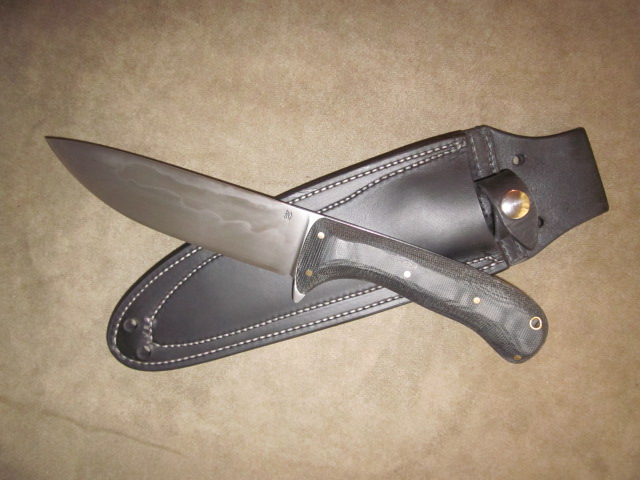Results 1 to 7 of 7
 12Likes
12Likes
Thread: Clay Hardening Razors??
-
09-27-2014, 11:59 AM #1
 Clay Hardening Razors??
Clay Hardening Razors??
I am by no means a metallurgist, so forgive me if this is an elementary question.
I recently acquired a clay hardened knife. I found myself wondering why this process would not work with straight razors, maintaining a very hard edge and softer (tougher) blade elsewhere to perhaps help prevent cracking,
in addition to the aesthetic appeal of the hamon which I think looks pretty distinctive.
Any ideas??Last edited by Phoenix51; 09-27-2014 at 12:21 PM.
-
09-27-2014, 01:32 PM #2

There are artisans who use various techniques to produce differentially hardened blades that display a hamon. I'm not certain if anyone's using clay, but I bet someone is.
Here's an earlier thread on the subject. You can use the forum search function to find others.When you are dead, you don't know that you are dead. It's difficult only for the others.
It's the same when you are stupid.
-
09-27-2014, 01:35 PM #3
-
09-27-2014, 01:48 PM #4

It depends on the type of steel. Some steels like O1 and O2 are oil quenched. Pretty much all high carbon steel can be oil quenched in fact.
Some steels can be waterhardened, and in combination with clay or other retardants, you can get a hamon.
However, it is important to understand that this has NO functional benefits whatsoever.
On swords and knives that are subject to repeated heavy impact, this may hold an advantage.
For a straight razor, there is no such advantage, and to the edge it doesn't matter of the rest of the body is hard or not.
In truth, there are only downsides for razors, since a soft spine means that the hone wear on the spine will get bad sooner rather than later.
As to preventing cracking: it's the opposite. A fully hardened razor has only a small chance of cracking.
With oil quenched steel, chances of cracking are as good as zero.
Water quenching is a much more violent process, and stands a higher chance of cracking the razor.
A differential hardening is even worse, because part of the razor shrinks worse than the other, and a LOT of stress is introduced. So much stress in fact that the curvature you see in Japanese swords is not because the swords are made like that. the swords go into the fire straight as a ruler. It is the mechanical stress that pulls them curved. Differential heat treatment on knives and razors has a high chance of causing cracks.
I don't know how much experimenting Scott has done since last I read of his HT experiments, but iirc he HTed 7 blades with clay coating, of which 5 cracked.Til shade is gone, til water is gone, Into the shadow with teeth bared, screaming defiance with the last breath.
To spit in Sightblinder’s eye on the Last Day
-
-
09-27-2014, 01:50 PM #5

Guess that answers the question. I had never heard of the technique until just a few days ago. There's a knifemaker in South Florida who does some pretty interesting work and he had this for sale. He's out of the knife making business now so I figured I had better snap it up.

-
09-27-2014, 02:40 PM #6

I have made razors with hamons. I have used the process for aesthetic reasons. I have a video on the process. There are a lot of videos on the net on how to make a temper line or hamon. Like Bruno said it works best on shollow hardening steels like w2 or 1095.
Charlie
-
09-28-2014, 05:08 AM #7aka shooter74743




- Join Date
- Sep 2009
- Location
- SE Oklahoma/NE Texas
- Posts
- 7,285
- Blog Entries
- 4
Thanked: 1936
Its Charlie's fault i wanted to do some hamons! I am not done with hamons as i like the look...but fot knives and razors its just looks and of no real use at all. I like them...
Southeastern Oklahoma/Northeastern Texas helper. Please don't hesitate to contact me.
Thank you and God Bless, Scott


 LinkBack URL
LinkBack URL About LinkBacks
About LinkBacks






 Reply With Quote
Reply With Quote


